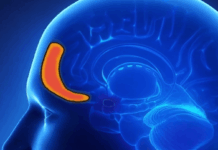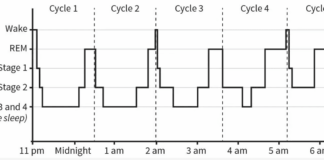
Fasting, a mainstay of virtually every cultural and religious tradition on earth, is an essential tool in the management of autoimmune disease, and should be considered as a therapeutic intervention in autoimmune patients in order to improve both metabolic and immune parameters.
Fasting: A Long-Neglected Facet of the Human Condition
For millennia, fasting has been one of the anchoring rituals in a variety of spiritual denominations. For example, all the major world religions, including Hinduism, Buddhism, Islam, Christianity, and Judaism espouse religious doctrines that prescribe fasting on designated calendar days (1). In addition, fasting is a practice rooted in evolutionary biology, since throughout evolutionary history, human bodies have adapted to periods of feast and famine. Matron and colleagues articulate this with, “Because animals, including humans, evolved in environments where food was relatively scarce, they developed numerous adaptations that enabled them to function at a high level, both physically and cognitively, when in a food-deprived/fasted state” (2).
In contrast, contemporary human populations fall victim to the erroneous socioculturally constructed notion that three square meals a day begets health. However, ad libitum eating patterns and food overconsumption predictably lead to metabolic derangements such as insulin resistance, visceral adiposity, and endothelial dysfunction, especially when coupled to a sedentary lifestyle (2). These metabolic morbidities are the precursor to many of the long latency, degenerative diseases of modern society, such as cardiovascular disease, diabetes, and autoimmune disorders.
Benefits of Fasting for Aging and Disease
On the other hand, caloric restriction (CR) has been shown to enhance longevity and mitigate disease, as, “The cellular and molecular mechanisms responsible for the protective effects of CR have likely evolved billions of years earlier in prokaryotes attempting to survive in an environment largely or completely devoid of energy sources while avoiding age-dependent damage that could compromise fitness” (1, p.2). These pathways are conserved from lower to higher life forms.
For instance, when Escherichia coli (E. coli) are switched from a nutrient-rich broth to a calorie-free medium, their chronological lifespans are extended by a factor of four (3). Similarly, transitioning cells of Saccharomyces cerevisiae (S. cerevisiae), or common brewer’s yeast, from a standard growth culture to water consistently multiplies their lifespan two-fold and leads to dramatic increases in their resistance to stress (4, 5). By the same token, food dilution or food reduction reliably extends lifespan of Drosophila melanogaster, the common fruit fly (6). Further, subjecting the nematode Caenorhabditis elegans (C. elegans) to food deprivation likewise results in a major increase in lifespan (7, 8).
As discussed by Longo and Mattson (2014), “Notably, when switched to food deprivation conditions, both bacteria and yeast enter a hypometabolic mode that allows them to minimize the use of reserve carbon sources and can also accumulate high levels of the ketone body-like acetic acid, analogously to mammals” (1, p. 2). Studies of animal models and humans have illuminated that different fasting models, including intermittent fasting (IF), fasting mimicking diets (FMD), time-restricted feeding (TRF), and periodic fasting (PF), favorably influence various parameters of health, and can elicit positive disease outcomes in Alzheimer’s disease, Parkinson’s disease, cerebrovascular disease, diabetes, coronary heart disease, cancer, and an array of other chronic illnesses (2).
Evidentiary Support for Fasting in Autoimmunity
With respect to autoimmune disease in particular, fasting has been shown to reduce pathologic paracellular intestinal permeability, the precursor to all autoimmune disorders (9). Along with genetic predisposition and an environmental trigger, compromised gut barrier integrity is a prerequisite for autoimmune disease development (9). The violation of tight junction architecture is pivotal for loss of oral tolerance, since intestinal hyper-permeability enables the translocation of undigested food antigens, toxicants, and microbes across the mucosal barrier, eliciting an immune response from the gut-associated lymphoid tissue (GALT), which can manifest as autoimmune disease (9). In this respect, fasting holds incredible promise, since, “The autoimmune process can be arrested if the interplay between genes and environmental triggers is prevented by re-establishing intestinal barrier function” (10).
In particular, pooling of data from four controlled studies elucidated that fasting followed by a vegetarian diet ameliorates disease symptomatology and produces significant long-term clinical benefit in rheumatoid arthritis (11). Another study likewise demonstrated that prolonged fasting for seven to ten days leads to significant clinical improvement in rheumatoid arthritis, although improvements were lost when normal dietary habits were resumed, suggesting that cycles of fasting and re-feeding may be needed (12). Similarly, another study highlighted that fasting led to a decline in disease activity, as measured by a clinical six-joint score, in rheumatoid arthritis patients, accompanied by decreases in intestinal and extra-intestinal permeability (13). Moreover, in a remarkable case study that included patients with rheumatoid arthritis, fibromyalgia, and mixed connective tissue disease, prolonged fasting followed by a vegan diet allowed tapering of medications and led to patients being symptom-free or having minimal symptoms at follow-up (14).
There is also empirical support for a fasting mimicking diet (FMD) in multiple sclerosis. Impressively, FMDs have been shown to induce regeneration of oligodendrocyte precursor cells and remyelinate axons in experimental autoimmune encephalomyelitis (EAE), the mouse model of multiple sclerosis (15). In fact, “A FMD administered every week was effective in ameliorating EAE symptoms in all mice and completely reversed disease progression in a portion of animals after the onset of EAE signs” (15, p. 2143). In this study, reductions in pro-inflammatory cytokines, pathogenic Th1 and Th17 cell populations, and numbers of antigen-presenting cells occurred, while regulatory T cells, the subset of lymphocytes responsible for Th1-Th2-Th17 balance and attenuation of autoimmune responses, expanded (15). Suppression of autoimmunity also occurred by both induction of lymphocyte apoptosis and increases in corticosterone levels (15).
In addition, in a randomized, parallel-group, three-armed pilot trial, a single cycle of a FMD for seven days followed by a six month Mediterranean diet significantly improved quality of life compared to both a ketogenic diet (KD) and the control group in patients with relapsing-remitting multiple sclerosis (RRMS) (15). Both the KD and FMD also led to a mild reduction in expanded disability status scale (EDSS) scores, which were inversely correlated with health-related quality of life (HRQOL) scores (15). In both the FMD and KD groups, slight reductions in white blood cell and lymphocyte counts were observed, along with increases in plasma beta-hydroxybutyrate, a ketone body indicative of induction of therapeutic ketosis (15). Moreover, at day eight of fasting, the FMD produced over a 20% decline in total lymphocyte count in 72% of patients, which the authors suggest may ameliorate MS symptoms via reductions in auto-reactive lymphocytes (15). However, levels of autoimmune lymphocytes returned to baseline levels at month three after patients were transitioned to a Mediterranean diet, again suggesting that continued fasting cycles are required to maintain clinical benefits (15).
Molecular Mechanisms for Benefits Conferred Via Fasting
Mechanistically, fasting may trigger synthesis of glucocorticoids, the endogenous equivalent of steroids that are administered to autoimmune patients to reduce inflammation (15). Likewise, fasting attenuates oxidative stress, confers cytoprotection, optimizes energy metabolism, and bolsters stress resistance by increasing parasympathetic tone (1). The enhanced parasympathetic activity may improve the brain-gut axis, the bidirectional means of communication between the central nervous system and immune system, leading to better intestinal motility, blood flow, and gastric secretions, reduced heart rate and blood pressure, and increased heart rate variability, the last of which engenders improved autonomic balance (2, 16). Better regulation of the gut-brain axis enables the brain to stimulate efferent vagal fibers that innervate nicotinic cholinergic receptors on immune cells, thereby modulating the peripheral immune system in an anti-inflammatory direction (17, 18, 19). Further, enhanced cholinergic anti-inflammatory neurotransmission through the vagal nerve inhibits release of cytokines from glial cells, leukocytes, and macrophages, such that these pro-inflammatory intercellular signaling molecules implicated in autoimmune pathogenesis are suppressed (20).
DNA based repair mechanisms, stem cell-based regeneration, and autophagy of dead cells, debris, and amyloid beta plaques and tau protein, both of which are implicated in neurodegenerative diseases, are also promoted by fasting (2). Autophagy, the process of protein degradation and turnover of other cell constituents, is instrumental in maintenance of homeostasis. At the level of the brain, fasting enhances executive function and cognition, synaptic plasticity, neurogenesis, mitochondrial biogenesis, synthesis of neurotrophic factors, and ameliorates inflammation (1, 2).
In addition, fasting may mediate an anti-inflammatory effect via modulation of mechanistic target of rapamycin (mTORC) or adenosine monophosphate-activated protein kinase (AMPK), intracellular sensors which integrate environmental cues and detect accessibility of nutrients in order to dictate cell fate (21). In particular, mTORC1 is considered a critical positive determinant and rheostat of the immunosuppressive actions of Tregs, which couples immune signals and metabolic programming in establishing functional competency of Treg populations (22). The notion that fasting relieves autoimmunity via these molecular mechanisms is supported by studies showing that the AMPK agonist, metformin, or the mTORC1 inhibitor, rapamycin, alleviates EAE by diminishing effector T cells, enhancing Treg cells, and prohibiting central nervous system infiltration by mononuclear cells (23, 24). Thus, fasting may be efficacious in preventing recruitment of immune cells at sites of autoimmune lesions (15).
Furthermore, fasting leads to significant reductions in levels of leptin, a pro-inflammatory adipokine that is elevated in rheumatoid arthritis, systemic lupus erythematosus, type 1 diabetes, autoimmune hepatitis, multiple sclerosis, Behcet’s disease, psoriasis, and ulcerative colitis (25, 26). This has the effect of up-regulating CD4+ CD25+ Foxp3+ regulatory T cells, the subset of immune cells which induce peripheral immune tolerance, are depleted in autoimmune disease, and are inhibited by leptin (26). Fasting also improves ketone production, insulin sensitivity, hepatic glycogenolysis, adipose tissue lipolysis, and anabolic activity in muscle, all of which promote metabolic correction (1, 2). A review of the literature also reveals that fasting improves many other metabolic biomarkers, such as glucose, lipids, leptin, and adiponectin (Patterson et al., 2015). Increases in adiponectin, which occur with fasting, are favorable since levels of this anti-inflammatory fat tissue-derived adipokine are compromised in multiple sclerosis, psoriasis, and Sjogren’s (25).
Fasting for Sleep, Detoxification, and Circadian Rhythm Management
Fasting may also produce cardiometabolic improvements by leveraging and synchronizing circadian rhythm biology. According to Patterson and colleagues (2015), “It is hypothesized that some fasting regimens and time-restricted feeding impose a diurnal rhythm in food intake, resulting in improved oscillations in circadian clock gene expression that reprogram molecular mechanisms of energy metabolism and body weight regulation” (27, p.7). In addition, fasting may shift microbiota populations towards a healthier composition, such that they harvest less energy from the diet and favorably affect energy expenditure and storage (27). This effect may also be mediated through the circadian rhythm, since perturbed microbiota diurnal fluctuations and dysbiosis has been linked to glucose intolerance and obesity (28).
Fasting regimens may modify energy intake by restricting hours available for eating and by altering levels of appetite-regulating hormones such as leptin, ghrelin, and xenin, reducing obesity risk (Patterson et al, 2015). Finally, fasting may improve sleep quality, mitigating risk of obesity, diabetes, cardiovascular disease, and cancer, since, “Eating meals at abnormal circadian times (i.e., late at night) is hypothesized to lead to circadian desynchronization and subsequent disruption of normal sleep patterns” (27, p. 8).
The improvement in sleep alone may warrant fasting strategies, since sleep can facilitate excretion of toxicants implicated in autoimmunity. After all, “…sleep at the behavioral level is a process of neuronal restitution and detoxification at the cellular level” (29, p. 91). Restorative sleep and a normalized circadian rhythm enhance the convective exchange of cerebrospinal fluid with interstitial fluid, which in turn increases clearance of β- amyloid plaques and other neurotoxic waste products that accumulate in the central nervous system via the recently discovered lymphatic system of the brain (30, 31). Furthermore, it has been demonstrated that the enzymes of the three hepatic phases of detoxification, as well as drug-responsive nuclear receptors, function on a circadian rhythm, so a perturbed biological clock, which appears in autoimmunity, can lead to toxicant-induced pathology and altered drug metabolism (29).
Finally, fasting represents the ultimate reduction in antigenic load. In other words, fasting provides the body with a hiatus from the energetically intensive demands of digestive processes, and temporarily reduces exposure of the digestive tract to dietary food proteins that may be contributing to inflammation via allergenicity or other immune-mediated food reactions. Therefore, given its safety, efficacy, and the host of health benefits it imparts, fasting may be a viable option for inclusion in a holistic, food-as-medicine regimen for autoimmune wellness.
References
1. Longo, V. D., & Mattson, M. P. (2014). Fasting: Molecular Mechanisms and Clinical Applications. Cell Metabolism, 2, 181. doi:10.1016/j.cmet.2013.12.008
2. Mattson, M. P., Longo, V. D., & Harvie, M. (2016). Review: Impact of intermittent fasting on health and disease processes. Aging Research Reviews, 16, S1568-S1637. doi:10.1016/j.arr. 2016.10.005
3. Gonidakis, S., Finkel, S.E., & Longo, V.D. (2010). Genome-wide screen identifies Escherichia coli TCA-cycle- related mutants with extended chronological lifespan dependent on acetate metabolism and the hypoxia-inducible transcription factor ArcA. Aging Cell, 9, 868–881.
4. Longo, V.D., Ellerby, L.M., Bredesen, D.E., Valentine, J.S., & Gralla, E.B. (1997). Human Bcl-2 reverses survival defects in yeast lacking superoxide dismutase and delays death of wild-type yeast. Journal of Cell Biology, 137, 1581–1588.
5. Longo, V.D., Shadel, G.S., Kaeberlein, M., & Kennedy, B. (2012). Replicative and chronological aging in Saccharomyces cerevisiae. Cell Metabolism, 16, 18–31.
6. Piper, M.D., & Partridge, L. (2007). Dietary restriction in Drosophila: delayed aging or experimental artefact? PLoS Genetics, 3, e57.
7. Lee, G.D., Wilson, M.A., Zhu, M., Wolkow, C.A., de Cabo, R., Ingram, D.K., & Zou, S. (2006). Dietary deprivation extends lifespan in Caenorhabditis elegans. Aging Cell, 5, 515–524.
8. Kaeberlein, T.L., Smith, E.D., Tsuchiya, M., Welton, K.L., Thomas, J.H., Fields, S.,…Kaeberlein M. (2006). Lifespan extension in Caenorhabditis elegans by complete removal of food. Aging Cell, 5, 487–494.
9. Fasano, A. (2012). Leaky gut and autoimmune disease. Clinical Reviews in Allergy and Immunology, 42(1), 71-78.
10. Fasano, A., & Shea-Donohue, T. (2005). Mechanisms of disease: the role of intestinal barrier function in the pathogenesis of gastrointestinal autoimmune diseases. National Clinical Practice in Gastroenterology & Hepatology, 2(9), 416-422.
11. Muller, H., de Toledo, F.W., & Resch, K.L. (2001). Fasting followed by vegetarian diet in patients with rheumatoid arthritis: a systematic review. Scandinavian Journal of Rheumatology, 30, 1–10.
12. Skoldstam, L., & Magnusson, K.E. (1991). Fasting, intestinal permeability, and rheumatoid arthritis. Rheumatological Disease Clinics of North America, 17(2), 363-371.
13. Sundqvist, T., Lindstrom, F., Magnesson, K.E., Skoldstam, L., Stjernstrom, I., & Tagesson, C. (1982). Influence of fasting on intestinal permeability and disease activity in patients with rheumatoid arthritis. Scandinavian Journal of Rheumatology, 11(1), 33-38.
14. Fuhrman, J., Sarter, B., & Carabro, D.J. (2002). Brief case reports of medically supervised, water-only fasting associated with remission of autoimmune disease. Alternative Therapies in Health and Medicine, 8(4), 110-111.
15. Choi, I.Y., Piccio, L., Childress, P., Bollman, B., Ghosh, A., Brandhorst, S., & … Longo, V. D. (2016). A Diet Mimicking Fasting Promotes Regeneration and Reduces Autoimmunity and Multiple Sclerosis Symptoms. Cell Reports, 15(10), 2136-2146.
16. Studer, V., Rocchi, C., Motta, C., Lauretti, B., Peugini, J., Brambilla, L.,…Rossi, S. (2017). Heart rate variability is differentially altered in multiple sclerosis: implications for acute, worsening and progressive disability. Multiple Sclerosis Journal of Experimental and Translational Clinics, 3(2), eCollection Apr-Jun.
17. Levy, G., Jodan, E., Fishman, M.D., Da-Zhong, X., Dong, W., Palange, D.,…Ditch, E.A. (2012). Vagal nerve stimulation modulates gut injury and lung permeability in trauma-hemorrhagic shock. Journal of Trauma, Acute Care, and Surgery, 73(2), 338-342. doi:10.1097/TA.0b013e31825debd3.
18. Ulloa, L. (2005). The vagus nerve and the nicotinic anti-inflammatory pathway. Nature Reviews in Drug Discovery, 4, 673–684.
19. Wang, H., Yu, M., Ochani, M., Amella, C.A., Tanovic, M., Susarla, S.,…Tracey, K.J. (2003). Nicotinic acetylcholine receptor alpha7 subunit is an essential regulator of inflammation. Nature, 421, 384–388.
20. Tracey, K.J. (2017). Physiology and immunology of the cholinergic anti-inflammatory pathway. The Journal of Clinical Investigation, 117, 289-296.
21. Laplante, M., & Sabatini, D.M. (2012). mTOR signaling in growth control and disease. Cell, 149, 274–293.
22. Zeng, H., Yang, K., Cloer, C., Neale, G., Vogel, P., & Chi, H. (2013). mTORC1 couples immune signals and metabolic programming to establish T(reg)-cell function. Nature, 499(7459), 485-490. doi: 10.1038/nature12297.
23. Nath, N., Khan, M., Paintlia, M.K., Singh, I., Hoda, M.N., and Giri, S. (2009). Metformin attenuated the autoimmune disease of the central nervous system in animal models of multiple sclerosis. Journal of Immunology, 182, 8005–8014.
24. Esposito, M., Ruffini, F., Bellone, M., Gagliani, N., Battaglia, M., Martino, G., and Furlan, R. (2010). Rapamycin inhibits relapsing experimental autoimmune encephalomyelitis by both effector and regulatory T cells modulation. Journal of Neuroimmunology, 220, 52–63.
25. Hutcheson, J. (2015). Adipokines influence the inflammatory balance in autoimmunity. Cytokine, 2, 272. doi:10.1016/j.cyto.2015.04.004
26. Liu, Y., Yu, Y., Matarese, G., & La Cava, A. (2012). Cutting edge: fasting-induced hypoleptinemia expands functional regulatory T cells in systemic lupus erythematosus. Journal of Immunology, 188(5), 2070-2073.
27. Patterson, R.E., Laughlin, G.A., LaCroix, A.Z., Hartman, S.J., Natarajan, L., Senger, C.M., & … Gallo, L. C. (2015). Practice Applications: Intermittent Fasting and Human Metabolic Health. Journal Of The Academy Of Nutrition And Dietetics, 115(8), 1203-1212. doi:10.1016/j.jand. 2015.02.018
28. Thaiss, C.A., Zeevi, D., Levy, M., Ailberman-Schapira, G.Z., Suez, J., Tengeler, A.C.,…Elinav, E. (2014). Transkingdom control of microbiota diurnal oscillations promotes metabolic homeostasis. Cell, 159, 514–529.
29. Inoue, S., Honda, K., & Komoda, Y. (1995). Sleep as neuronal detoxification and restitution. Behavior and Brain Research, 69(1-2), 91-96.
30. Xiu, L., Kang, H., Xu, Q., Chen, M.J., Liao, Y.,…Nedergaard, M. (2013). Sleep drives metabolite clearance from the adult brain. Science, 342(6156), 373-377. doi: 10.1126/ science.1241224.
31. Mendelsohn, A.R., & Larrick, J.W. (2013). Sleep facilitates clearance of metabolites from the brain: glymphatic function in aging and neurodegenerative diseases. Rejuvenation Research, 16(6), 518-523. doi: 10.1089/rej.2013.1530.
Disclaimer: We at Prepare for Change (PFC) bring you information that is not offered by the mainstream news, and therefore may seem controversial. The opinions, views, statements, and/or information we present are not necessarily promoted, endorsed, espoused, or agreed to by Prepare for Change, its leadership Council, members, those who work with PFC, or those who read its content. However, they are hopefully provocative. Please use discernment! Use logical thinking, your own intuition and your own connection with Source, Spirit and Natural Laws to help you determine what is true and what is not. By sharing information and seeding dialogue, it is our goal to raise consciousness and awareness of higher truths to free us from enslavement of the matrix in this material realm.
 EN
EN FR
FR



























I recently heard myself think: We are “fooding” ourSelves to death!! No wonder I always felt super after fasting a week or more!